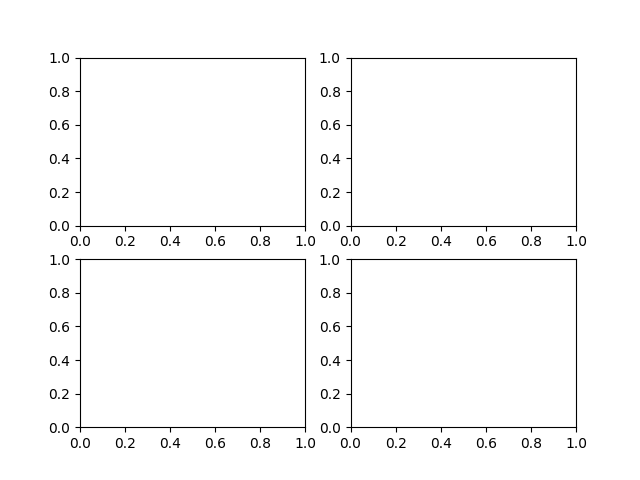Version 2.0.0b1.post7580.dev0+ge487118

In early versions of matplotlib, if you wanted to use the pythonic API and create a figure instance and from that create a grid of subplots, possibly with shared axes, it involved a fair amount of boilerplate code. e.g.
import matplotlib.pyplot as plt
import numpy as np
x = np.random.randn(50)
# old style
fig = plt.figure()
ax1 = fig.add_subplot(221)
ax2 = fig.add_subplot(222, sharex=ax1, sharey=ax1)
ax3 = fig.add_subplot(223, sharex=ax1, sharey=ax1)
ax3 = fig.add_subplot(224, sharex=ax1, sharey=ax1)

Fernando Perez has provided a nice top level method to create in
subplots() (note the “s” at the end)
everything at once, and turn on x and y sharing for the whole bunch.
You can either unpack the axes individually:
.. code-block:: python
# new style method 1; unpack the axes fig, ((ax1, ax2), (ax3, ax4)) = plt.subplots(2, 2, sharex=True, sharey=True) ax1.plot(x)

or get them back as a numrows x numcolumns object array which supports numpy indexing
# new style method 2; use an axes array
fig, axs = plt.subplots(2, 2, sharex=True, sharey=True)
axs[0, 0].plot(x)
